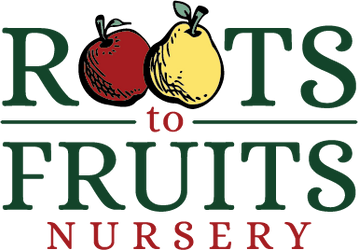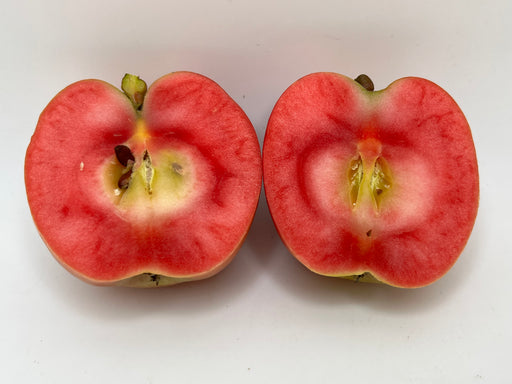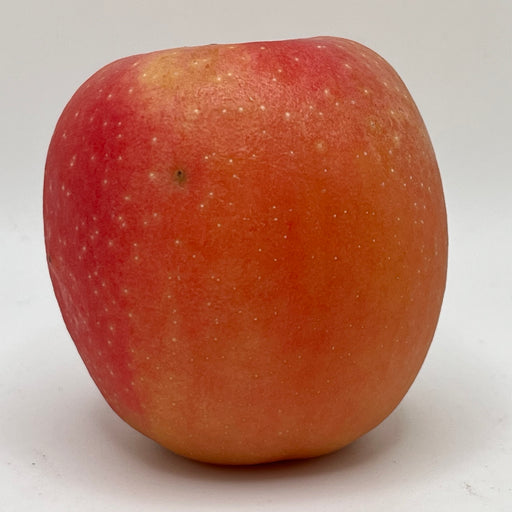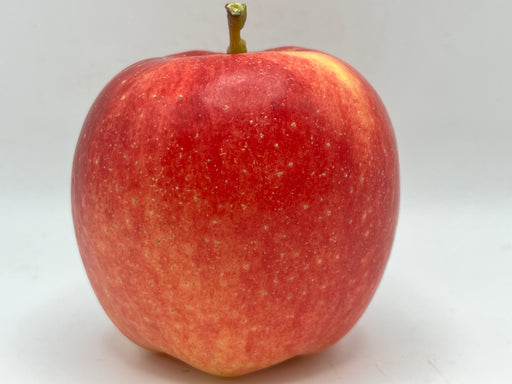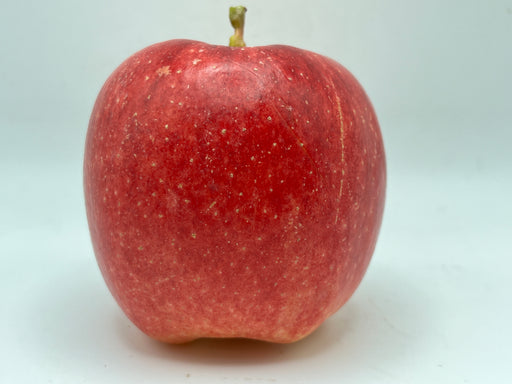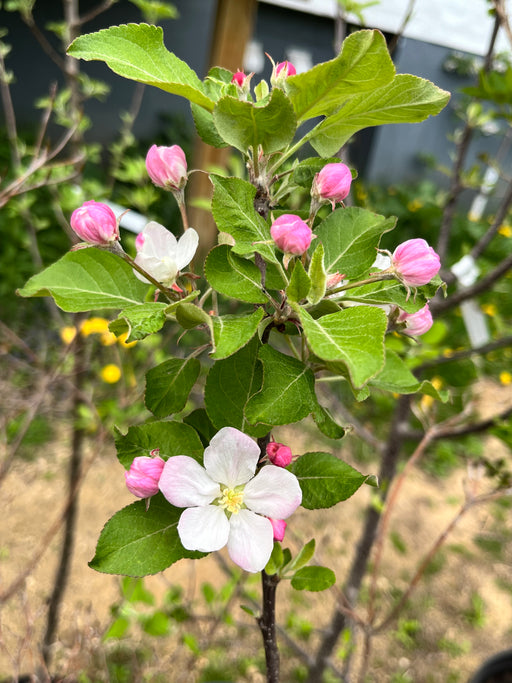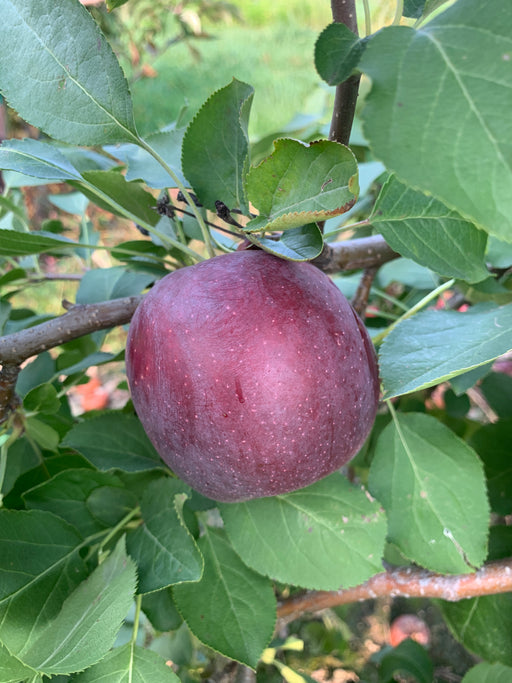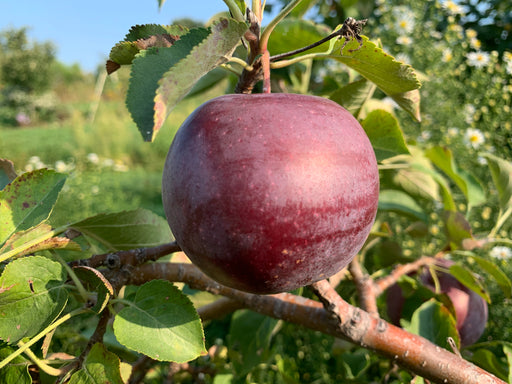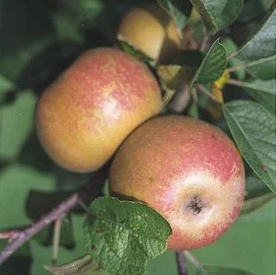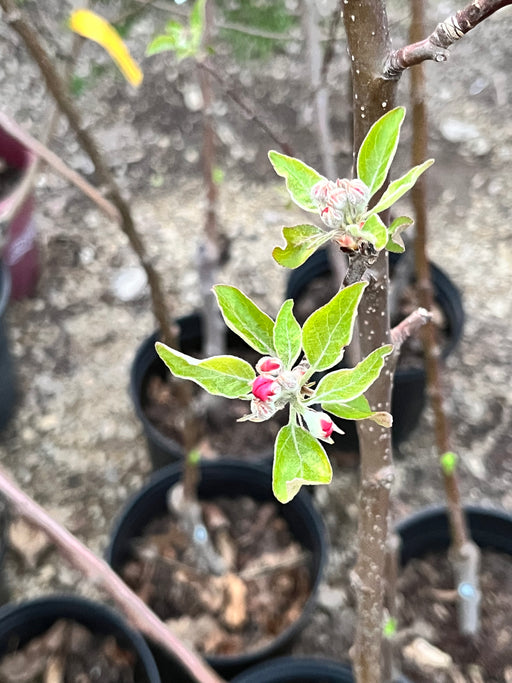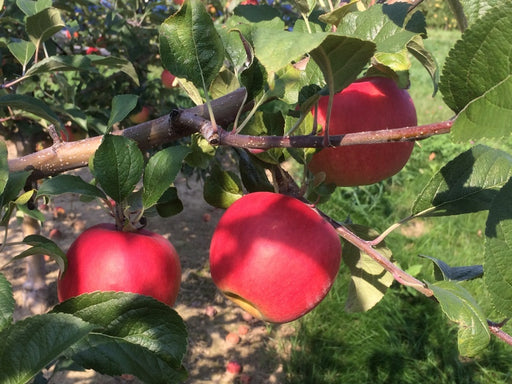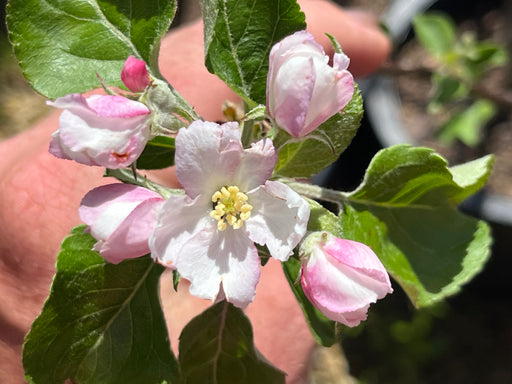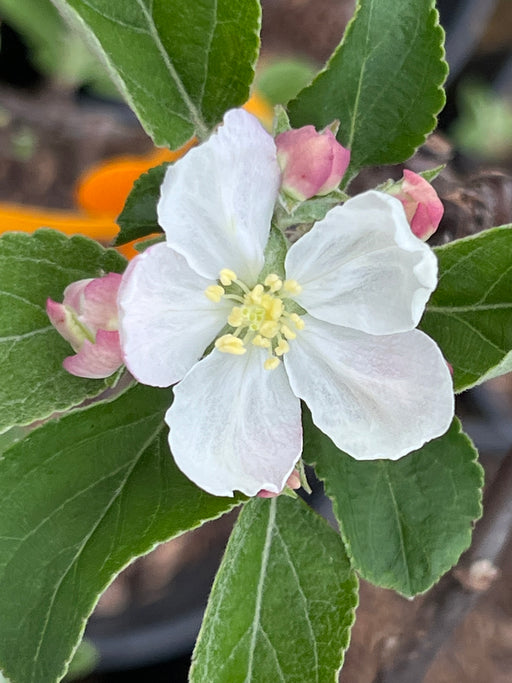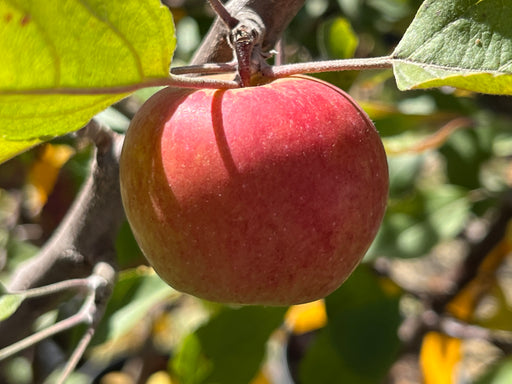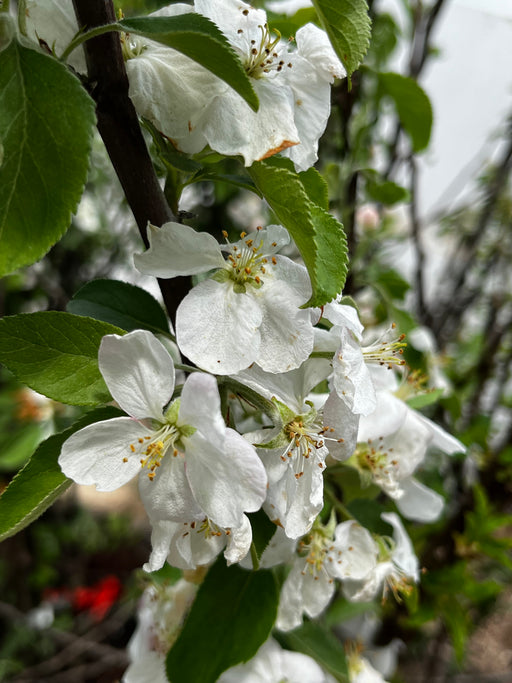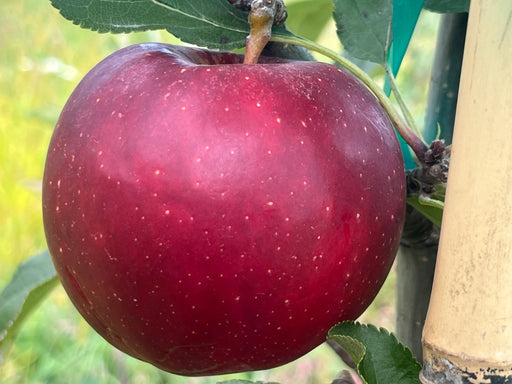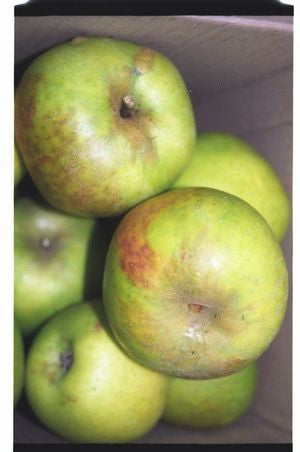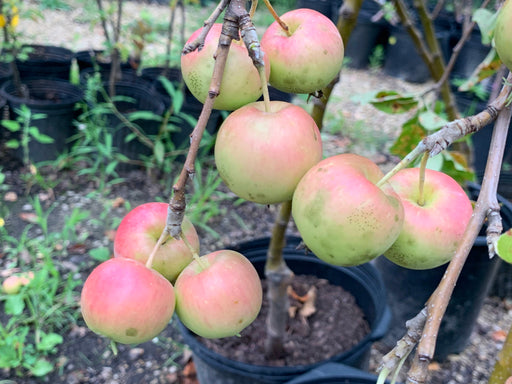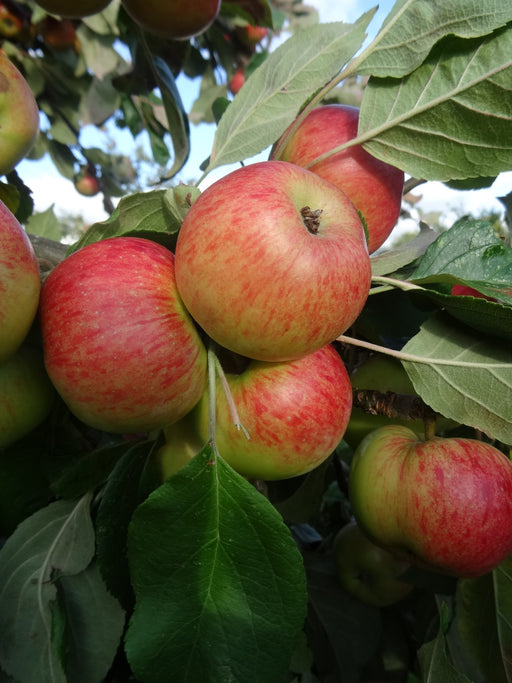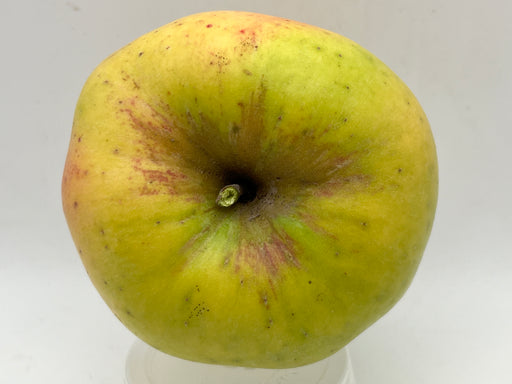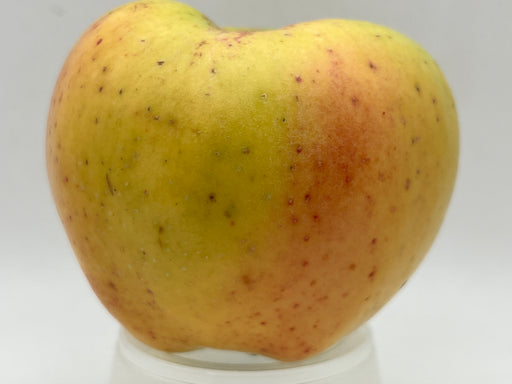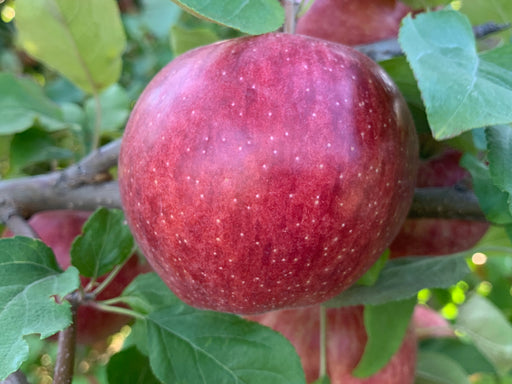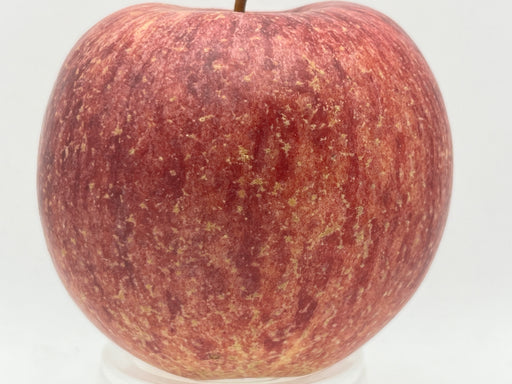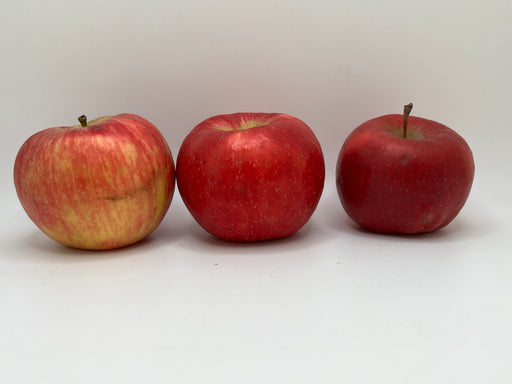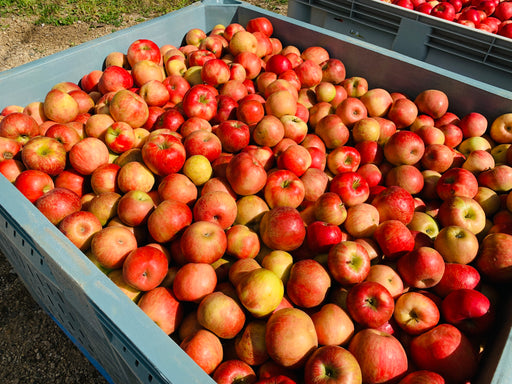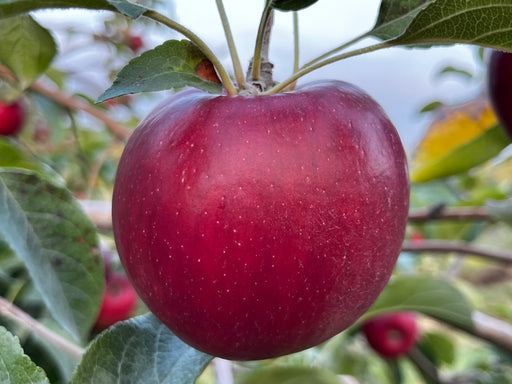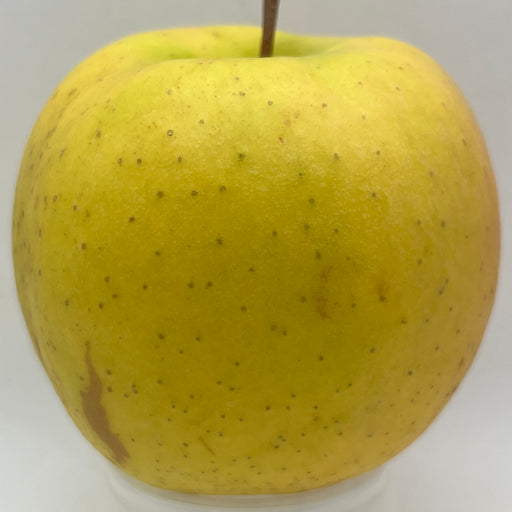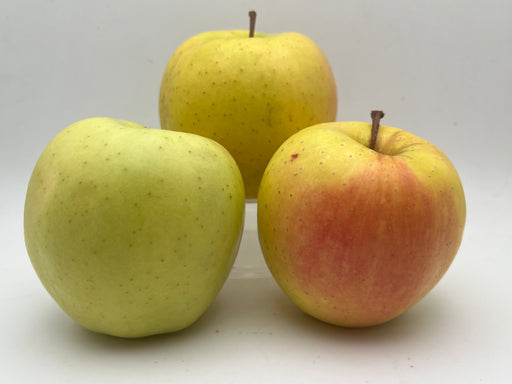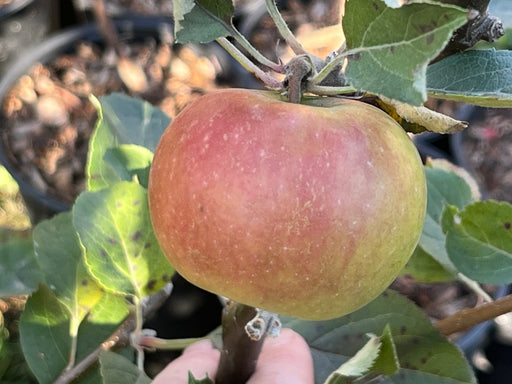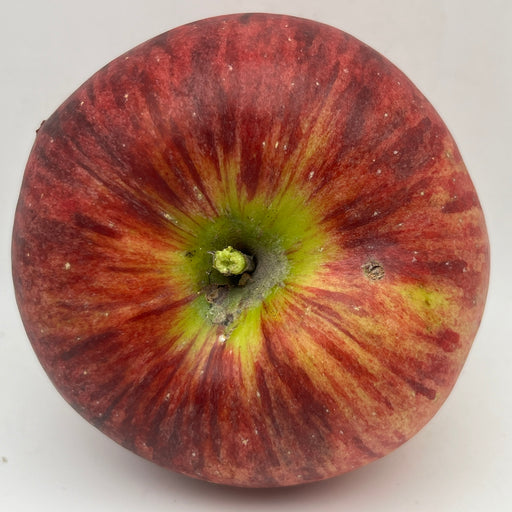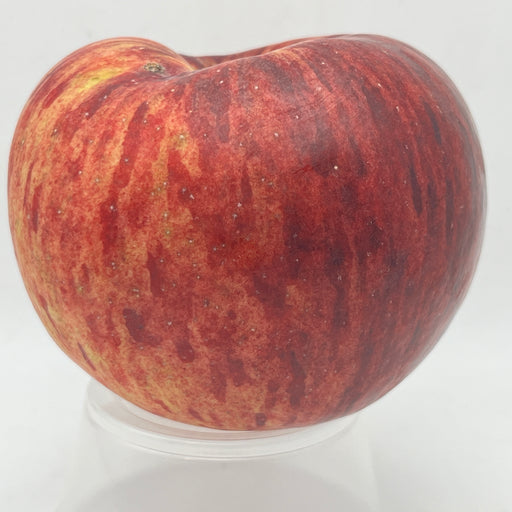Apple Trees
Our apple trees, like many fruit trees, are propagated by grafting. There are two parts to an apple tree. The scion is the fruiting part of the tree, which gives you the variety of the apple, and the rootstock, which influences the mature size and hardiness of the tree, and determines the time it takes for the tree to fruit. We sell Standard, Semi-Dwarf, Dwarf, and Mini-Dwarf trees that do not require a lot of space and yet, will bear large fruit.
A few key notes on successful planting methods:
- Trees must be planted in well-drained soil
- Six hours of sunlight; full sun preferred
- Stake all trees for the first two years
- Dwarfs must have permanent stakes
- Tree guards should be used
- Plant at least two different apple tree varieties for Cross-Pollination
- Plant disease-resistant trees for less maintenance; we are happy to help make any suggestions you might need
We categorize our apple trees into at least five sizes: Petite, Maiden, Field Ready, Hand Select, and Container depending on the size of the tree. The Petite tree is our smallest graded tree less than 2 years in age; Maiden trees are usually 2 years old and are branchless. These are also called whips and will bear in 2-3 years. A Field Ready tree is 2-3 years old and might have some lateral branching, be thicker above the graft, and will bear in 1-2 years. The Hand Select trees are only about 20% of trees we have and are 3 year old trees, 6-9’ tall and can be heavily branched. You can expect fruiting on a Hand Select tree in about a year.
Airlie Apple Tree
Also called Airlie or Aerlie Red Flesh Apple (ARFA and pronounced Air-Lee), this apple is a product of a sport limb from an unknown tree in the 196...
View full detailsAmbrosia Apple Tree
Discovered as a chance seedling in the Similkameen Valley in British Columbia, Canada in the 1990s. Because it was discovered by chance, there is n...
View full detailsAnna Apple Tree
Very early fruiting apple from Israel that can grow in warmer climates. USDA Zone: 5-10 Mature Height: M.111 ~18-21' tall; Semi-Dwarf Sun: Full Su...
View full detailsArkansas Black Apple Tree
Introduced 1870 in the orchard of a Mr. Brathwaite, the fruit, a variety of Winesap, round and of medium size. The flesh is yellow, fine grained, c...
View full detailsAshmead's Kernal Apple Tree
First grown from a seedling in Gloucester, England in an orchard owned by William Ashmead. The ‘Kernel’ in the name also suggests it was a chance f...
View full detailsAutumn Crisp Apple Tree
The Autumn Crisp apple is a relatively new variety of apple that was developed by Cornell University's apple breeding program in Geneva, New York, ...
View full detailsBaker's Delight Apple Tree
Description Coming Soon! USDA Zone: 4-9 Mature Heights: B.9: ~10-12' Tall; Dwarf M.9-337: ~8-10' Tall, Dwarf G.935: ~12-14' Tall, Dwarf Sun: Full S...
View full detailsBaldwin Apple Tree
William Butters found this chance apple tree near Wood Hill (close to modern day Wilmington, MA). Research suggests Butters discovered this apple a...
View full detailsBinet Rouge Apple Tree
Grown in the Normandy region of France and noted as early as the 1870s, the Binet Rouge apple is primarily a cider apple. Designated as one of seve...
View full detailsBlack Oxford Tree
This Apple hails from Oxford County, Maine and was discovered by Nathanial Haskell in 1790. This very tree, still standing in 1907, is well known t...
View full detailsBonnie's Best Apple Tree
The Bonnie's Best Apple is native to Wisconsin found on an orchard owned by Bonnie Keehn in Cooksville, WI. She first showed the qualities of this ...
View full detailsBramley's Seedling Apple Tree
One of the longest lived apple trees with the original specimen still standing in an orchard in Nottinghamshire, UK, having been planted as a seedl...
View full detailsBrown's Snout Apple Tree
Discovered in the mid 1850s on the farm of Mr. Dent at Yarkhill, Herefordshire, UK; this is another English Cider Apple. It is on the smaller side,...
View full detailsBud 9 Rootstock
A dwarfing rootstock also known as Budagovsky 9 crossed from an M.8 x Red Standard (Krasnij Standard) in the Soviet Union. Slightly more dwarfing a...
View full detailsCalville Blanc d'Hiver Apple Tree
One of the oldest apples still in existence, the picturesque Calville has been around in France and Germany since the mid 1600s. The Premier French...
View full detailsCameo Apple Tree
Discovered as a chance sapling in 1987 between Red Delicious and Golden Delicious, the Cameo apple’s rise to fame is a quick one. Though we cannot ...
View full detailsCameron Select Red Honeycrisp Tree
Please see our main Honeycrisp page for a general description. The difference between the Cameron Select and the standard Honeycrisp is a matter of...
View full detailsCampfield Apple Tree
First discovered in New Jersey in the late 1700s at a farm owned by a Mr. Matthew Campfield (hence the name) and soon because a renowned cider appl...
View full detailsCarolina Red June Apple
Early Fruiting apple tree- ripens in July. Bright red and briskly tart. Tree does well in different soils and tends to bloom late. Apples ripen ove...
View full detailsChampagne Apple Tree
First found in a New Mexico Valley in the 1940s, the Champagne has quite the volatile history. The Dixon family began growing this apple as soon as...
View full detailsChieftain Apple Tree
Cross of a Jonathan and Delicious and created back in 1917 but wasn't released to the public in the 1990s. Very sweet and cold hardy- it is also di...
View full detailsClaygate Pearmain Apple Tree
Popular eating apple from Victorian England. Noted for a strong resistance to apple scab. USDA Zone: 4-8 Mature Height: G.935 ~11-13' tall; Dwarf ...
View full detailsConnel Red Apple Tree
Tom Connell discovered this apple on his orchard in Menominee, WI! Finally available to the public in 1956 the apple is closely related to its pare...
View full detailsCortland Apple Tree
Created at Cornell University’s Agricultural Station in 1898, the Cortland Apple is a popular tree around the Great Lakes even today. It is now the...
View full details